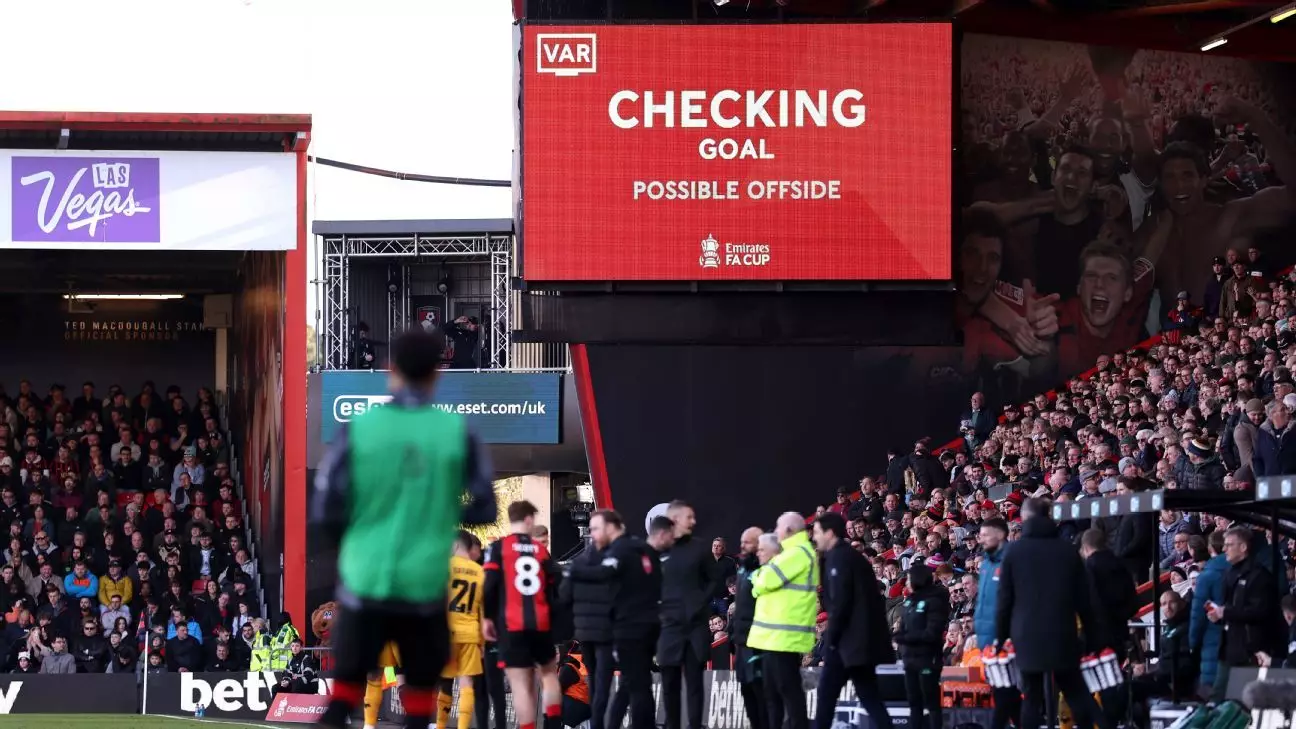On the weekend of April 12-14, during Matchweek 32, the Premier League stands on the cusp of transformative progress as it rolls out its semi-automated VAR offside technology (SAOT). This initiative comes exactly a year after all clubs unanimously agreed to implement the technology, marking a significant evolution in how the beautiful game is officiated in England. While the introduction of SAOT was initially intended for after an international break in 2024, logistical hurdles pushed the timeline forward, demonstrating the league’s urgency to enhance the accuracy of its officiating.
Ready, Set, Go—But Not Quite
The road leading up to this technological leap has not been smooth. Premier League chief football officer Tony Scholes openly expressed his initial skepticism regarding the deployment of SAOT after facing delays during testing phases. At one juncture, he voiced concerns, saying “,I had severe doubts about this,” but recent developments have shifted his perspective towards optimism. This sentiment hints at an intriguing dynamic: a constant battle between tradition and innovation within a sport resistant to change.
SAOT has already undergone preliminary evaluations during the FA Cup’s fifth round and quarterfinals, displaying its potential impact amidst real match scenarios. However, the journey has been laden with hiccups. In one prominent incident involving Bournemouth and Wolverhampton, the match saw an unprecedented eight-minute VAR review. This length showcased the limitations of current technology, indicating that while innovation is necessary, it is not yet foolproof.
The Promise of Efficiency
Optimistically, SAOT aims to cut down offside checks by an average of 31 seconds, a substantial improvement over the current processes. Every second counts in football, and such efficiency could mean the difference between a victory and a loss. Moreover, this reduction would ideally restore the game’s natural flow, something that fans and players alike have yearned for after enduring frustratingly lengthy reviews.
Yet, the nagging question remains: Is this technology sufficient? Other leagues, like Serie A, have already adopted SAOT, showcasing their commitment to progressive officiating. In contrast, the Premier League has opted to develop its own system, bolstered by Scholes’ insistence that it is the “best and most accurate” choice. But in a world where other established leagues are already using advanced systems, this approach could be perceived as a technology race with the potential for long-term repercussions if not executed perfectly.
Facing the Global Arena
Internationally, FIFA and UEFA have stepped ahead by integrating a chip inside the ball for more precise offside detection. The impediment here lies within Adidas owning the patent, excluding other leagues from capitalizing on this technology. It raises an essential discussion about competitive parity across leagues globally. As the Premier League strives to maintain its global flair and prestige, it will need to strike a balance between introducing cutting-edge technology and respecting its rich history.
The Premier League’s hesitation to adopt the chip-in-the-ball technology may stem from a desire to preserve the authenticity of the game while preventing excessive dependency on tech. In a landscape increasingly governed by algorithms and metrics, such moves could foster a sense of disillusionment among traditionalists.
Scrutinizing the Process
Despite the promise of improved accuracy with SAOT, there have been notable discrepancies in its implementation. Examples abound wherein questionable decisions have raised eyebrows—such as Barcelona’s Robert Lewandowski having a legitimate goal revoked in a high-stakes clash against Real Sociedad under LaLiga’s SAOT regime. Would the Premier League’s newly minted SAOT face similar scrutiny? History has not always been kind to technology in football, making it imperative for the Premier League to tread carefully in the court of public opinion.
The transition to SAOT could have profound implications for the Premier League’s reputation and its officials’ confidence in using technology. Football, a sport steeped deeply in emotion and passion, thrives on human interpretation—there’s an undeniable beauty to the arbitrary nature of decisions that technology might threaten to extinguish. However, lack of clarity and consistency in rulings could equally disenfranchise fans.
With the April rollout approaching, eyes will be on the Premier League—not just for the outcomes but also for how it navigates the complexities tied to this technology. This is not merely about policing the game; it is about preserving its very soul amidst a technological upheaval. How this will unfold remains to be seen; for now, only the whistle of the referees will tell.

